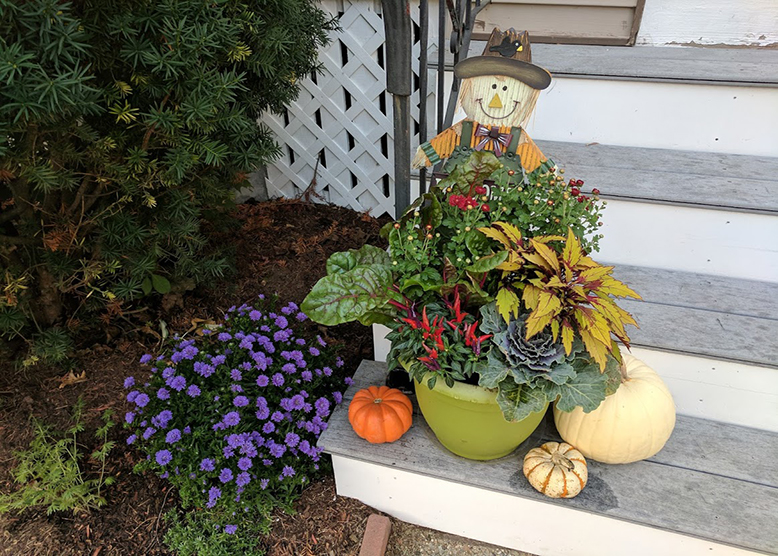
Your Thanksgiving Dinner Menu: Inspiration for Next Year’s Vegetable Garden
If you love gardening, you probably look forward to those seed catalogs that are sent to you in mid-winter. Nothing cures the winter doldrums like looking through garden catalogs and planning your garden! Who would think that your Thanksgiving dinner plate might provide that same inspiration? This year, take a look at what is on your Thanksgiving menu and think about some vegetables and herbs you can grow in your garden for next year’s Thanksgiving feast. Here are some ideas and tips.
Potatoes
Many feel that mashed potatoes are as essential as turkey for Thanksgiving. Does growing your own potatoes sound impossible? It’s easier than you think. There are so many options for growing potatoes in containers. Grow bags are a popular option for those with limited or no garden space. They can be used outdoors on the ground, or on the deck or balcony. Fill the container halfway with a good quality compost or soilless medium. Place seed potatoes on soil layer about 8” apart, and then cover with more soil to fill container. Water and fertilize regularly (use a 4-6-12 fertilizer). A late planting of potatoes will have them ready for your Thanksgiving table (10-15 weeks, garden-to-table.) A favorite variety to grow is Yukon Gold, which makes wonderful mashed potatoes.
Sometimes potatoes develop powdery mildew or might attract aphids. It is important for the health of your potato plants to treat for insect or disease problems. Arborjet’s new product, Eco-1 Garden Spray, is effective for powdery mildew and aphids, as well as problems with mites and thrips and many other plant health problems.
Brussels Sprouts
Nothing signals the fall harvest like the appearance of long stalks of brussels sprouts in your local farmer’s market. Brussels sprouts are lots of fun to grow on your own. They are grown in containers with varying results, so they do best out in the garden. Begin by planting seedlings early in the spring purchased from your local garden center. These plants need a lot of room to grow, so space the seedlings about 12-18” apart. Water frequently to keep soil evenly moist throughout the growing season. Fertilize with a 20-20-20 fertilizer at planting time, and then switch to 10-10-10 once a month. Brussels sprouts are big feeders. Give them fertilizer, but don’t over fertilize. As brussels sprouts mature toward harvest time, they have an exotic tree-like look in your garden. Don’t forget to start these plants early! Garden-to-table may take 100 days, but homegrown brussels sprouts are so worth the effort! Two favorite varieties of brussels sprouts are Dagan and Nautic.
In the heat of summer, brussels sprouts risk damage from dry conditions. Arborjet’s NutriRoot contains many essential nutrients but also contains humectants which help hold water in the soil. Brussels sprouts may also suffer from attacks from aphids, leaf miners, and slugs. Arborjet’s Eco-1 Garden Spray will help keep these insects at bay. Keeping plants healthy will help them ward off diseases and insect attacks.
Green Beans
Green beans are easy to grow. Planting beans is a good activity with small children because the large seeds are easy for small hands to manage. Bean plants germinate and grow quickly, which is exciting for kids! Green beans produce fruit fairly quickly (50-60 days), so plant your green beans targeted for the Thanksgiving table in late summer. There are so many varieties of green beans – both pole beans and bush beans are great options. Bush beans take up less space while pole beans growing on a trellis might add interest to your garden. Try growing Purple King. Pods are purple but turn green when cooked.
Beans can develop several problems. Garden pests, including slugs and Japanese beetles, love them. Powdery mildew is also a common problem with many types of bean plants. Arborjet’s Eco-1 Garden Spray will be your ally in warding off these problems.
Herbs
Do you live where there is no garden space? Try growing herbs in pots indoors. Many herbs are used in Thanksgiving recipes. Sage is essential in most turkey stuffing and dressing recipes. Other herbs frequently used are thyme, parsley, rosemary, and bay leaves. Choose healthy plants from your local nursery and re-pot them into larger pots when you bring them home. Keep herb plants evenly watered but do not over-water. Fertilize lightly once a month. Some herbs are annuals (finish growing in one growing season) and others are perennials (will continue growing). Many herb plants will make a nice addition to your indoor plant collection.
Using a very mild solution of Arborjet’s NutriRoot will give plants the nutrients they need while humectants will help soil retain water. Many indoor plants are plagued by insect infestations, especially by white flies and mealy bugs. Use Arborjet’s Eco-1 Garden Spray to keep these damaging insects away from your indoor plants.
What types of garden crops are you including in this year’s Thanksgiving meal? It’s never too early to start thinking about next year, especially when planting is involved! We hope some of these tips will help spark your imagination for next year’s feast.


Sorry, the comment form is closed at this time.